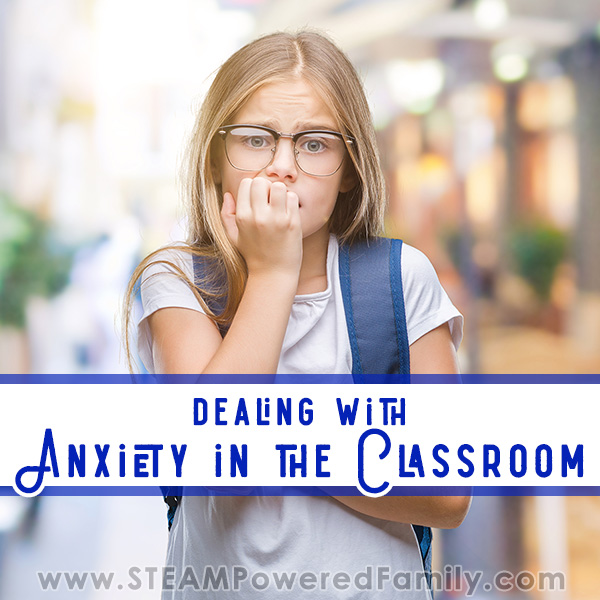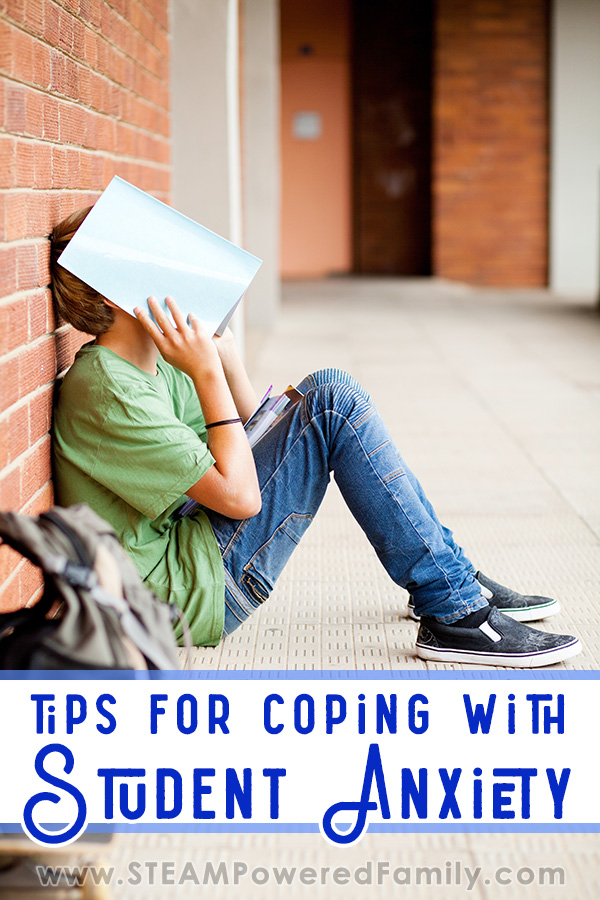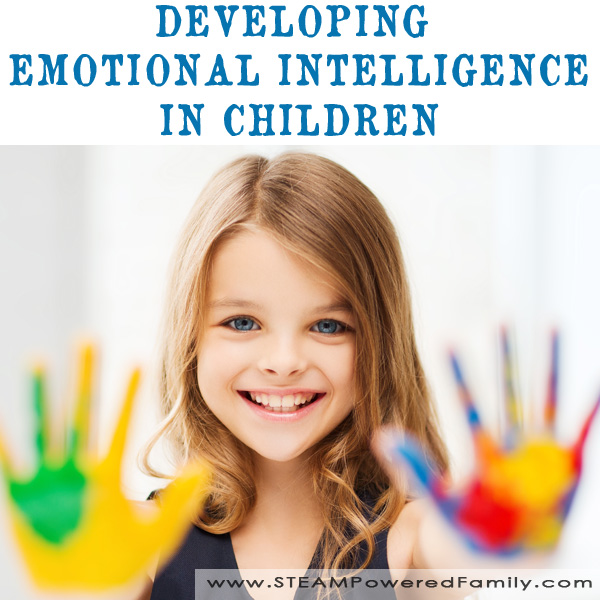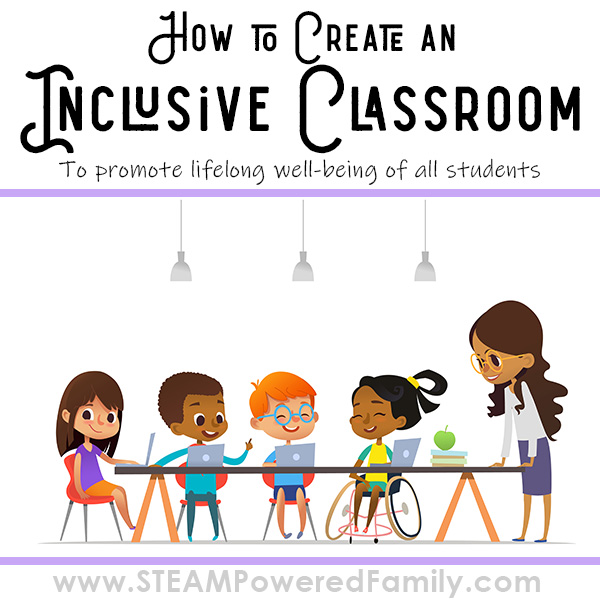Anxiety in the Classroom
When it comes to anxiety in teens and preteens, it’s not something they can just “get over.” For some children prescription medication or calming techniques can help. But anxiety takes so many different forms, it makes dealing with anxiety in the classroom as varied as the children teachers work with. I think it’s so important for teachers to understand what children with anxiety are going through. I’ve written about anxiety from the perspective of a parent in the past. Today I want to talk more about anxiety in the classroom. Here we have tips for teachers so they can build an effective strategy for helping students with anxiety in their classrooms.
Coping with Student Anxiety

Disclaimer: This article may contain commission or affiliate links. As an Amazon Influencer I earn from qualifying purchases.
Not seeing our videos? Turn off any adblockers to ensure our video feed can be seen. Or visit our YouTube channel to see if the video has been uploaded there. We are slowly uploading our archives. Thanks!
Don’t assume you know your students’ stories
If another teacher or students’ parents have shared their history, you may think you know their whole story. It may be that your student has adverse childhood experiences that have contributed to their anxiety. But trauma can be so layered that it’s hard to know if you really have an understanding of their personal experience. Even if you have information about a child’s background and source of their anxiety, the story on paper can be very different than what they experience in their own life and mind. Don’t make assumptions about your students’ lives. Know that when they are ready and feel safe to share with you, they will.
But also know they may never share. School is often a place where students feel unsafe. Other children may be cruel. Another teacher may be particularly harsh. The loudness of the bell could be a major trigger. There are many reasons why a child may find school triggering for their anxiety. No matter what a teacher does, they may never have the full trust of a student that would allow them to open up.
Instead, focus on connection and positive relationships. Build trust with your students. Try to provide as safe of a place in your classroom as you possibly can for the child. One day they may feel safe enough to open up to you, and if that happens, know you have done something very special for that child.
It’s not your job to figure out the source of a child’s anxiety
Even if you have some training in childhood trauma and anxiety, most teachers are not psychiatrists or social workers. Your job is to take what information is given to you and make sure your student is comfortable and safe in your classroom.
Remember, all anxiety doesn’t stem from childhood trauma. Generalized anxiety disorder can be inherited or have it’s root cause in something completely different. For my oldest, his anxiety is rooted in his giftedness and ability to understand things mentally far beyond his years. Physical concerns can also lead to anxiety. Food allergies and intolerances can present as anxiety.
Anxiety is not necessarily because of anything that happened in a child’s life. If you are concerned about a child, seek the help of professionals in your school system or community.
Build trust with all students but especially with those with anxiety
Your students may not be ready to share when they are feeling uncomfortable of anxious. Start the school year by letting all your students know that if they are ever feeling anxious, depressed, or just sad, they can come to you and talk without judgment.
However, it’s important to tell your students that you cannot keep a secret if there is serious risk to the student. Your job is to keep them safe. If you have reason to worry about their safety or the safety and well-being of others, it is important you report your concerns.
One way to start building trust with your students is just to have non-school related conversations throughout the week. Ask your students (particularly those that struggle with anxiety) about their weekend plans, likes, dislikes, and celebrations. You may also consider having a regular morning check-in with your classes. You could have a digital system where students tell you if they are struggling each day. Or a box where they can leave notes to let you know if they need to have a conversation with you or a counselor. Building that relationship is key to helping your students with anxiety.
Learn 5 ways you can build positive, trusting relationships with students in your classroom.
Implement breaks and destressors
When anxiety takes ahold of a child in your class, it’s important to recognize the signs. Whether they manifest as physical issues, behavioral problems, or psychological or educational signs, it’s imperative to know when students are exhibiting indications that they may be anxious. Whether it is a temporary problem that has suddenly appeared, or diagnosed anxiety. There are things you can do to help.
Talking to a trusted person can help, or even just sitting with them. Taking a break in a safe place or getting a drink. While working, many students find it helpful to have manipulatives (stress balls, slime, for example). Also taking time to do something like writing, drawing, coloring can help students destress.
In our community a new museum was recently built and they included a sensory room where people of all ages can go and relax, calm down, and take a moment to regulate themselves. These are not hard to build, can be done very inexpensively, and don’t need to take up much space. Plus they can be so helpful for students (and teachers!). Our friend Sharla at The Chaos and the Clutter was able to build a sensory room in a closet.
Dealing with anxiety in the classroom can be challenging for teachers. Every student’s situation is different, so it’s important not to make assumptions or try to diagnose. You can be an advocate when it comes to building relationships and allowing the student to have a safe place when it comes to dealing with their own anxiety. These tips will help you work with students in your classroom. Whether they are diagnosed with an anxiety disorder or just struggling with situational anxiety. With a little conscious effort and empathy you can be a positive force in the life of a child with anxiety.





